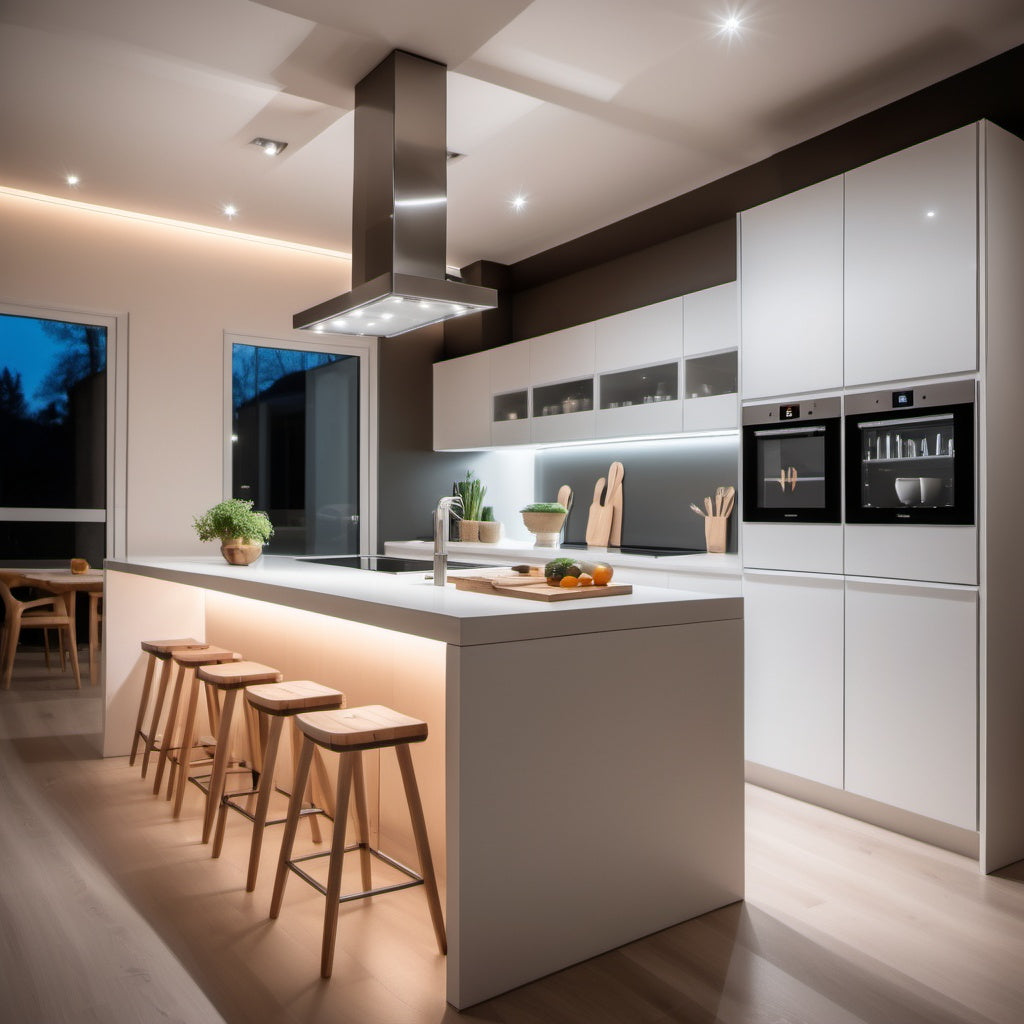
Planning Your Cabinet Lighting Project: Key Considerations
Share
Lighting plays a crucial role in any cabinet project, and understanding the nuances of your lighting system can make the difference between a successful and efficient installation versus unnecessary complications down the line. Whether you’re embarking on a new cabinetry project or upgrading an existing one, planning is key. Here’s a comprehensive guide to help you think through the essentials before starting your next lighting project.
Key Things to Consider
- Choice of lights and functionality
- Wattage requirements
- Zone definitions
- Power source availability
- Lighting restrictions
Choice of Lights and Functionality
The first and most critical step in planning your cabinet lighting is determining the types of lights and the functions you need. This will influence the rest of the process. Here are some essential questions to ask:
-
Strip or puck lights? – Decide whether you need strip lighting, puck lighting, or both. While 12V lighting systems can work for basic projects, they have limitations in terms of light output and length before voltage loss occurs. For more robust applications, we recommend 24V systems. These offer superior output, efficiency, and the ability to power longer runs of lighting with no dimming down the line.
-
Lighting temperature – Are you aiming for a warm, soft ambiance or a cool, bright workspace? Different lighting projects demand different color temperatures. You’ll also need to decide whether you need static lighting or the flexibility to change temperatures on demand. Take into account the specifications of the lighting products you’re considering to ensure they meet your requirements.
-
Switching options – Basic switching options like toggle or touch switches might work for simple setups, but consider if more sophisticated controls like remote, app, voice, or wall switch control would add convenience. The complexity of your control system will determine how many components you’ll need.
-
Sensor needs – Do you need motion sensors or contact switches to automatically turn lights on and off? This can be an efficient feature in cabinets that are frequently accessed. Identifying these needs early will help you select the right networking components to control your lighting system seamlessly.
-
Length and quantity of strip lighting – To calculate the total length of strip lighting required, determine the length needed for each area and the total quantity. You’ll also need to calculate the wattage per meter and verify that your driver can handle the total load. For puck lights, make sure to assess how many you need and calculate the wattage they will draw.
-
Cable connections – Planning how the lights will connect to the power source is essential. Understanding how to manage and distribute the cables using distribution blocks will save you time and effort during installation.
Wattage Requirements
Once you’ve determined the type and number of lights, it’s time to calculate the total wattage required. Here are some key points to consider:
- Calculate the wattage for each section of lighting. For strip lighting, measure the wattage per meter and multiply it by the total length. For puck lights, simply multiply the wattage by the number of lights.
- With the total wattage in hand, assess whether one driver can support your system or if you need multiple drivers. If you require multiple drivers, this could affect your switching and control options.
Zone Definitions
Cabinet lighting often involves multiple zones that may need to be controlled independently. Defining your zones can simplify both installation and usability:
- Are all lights in close proximity, or will they be spread across multiple areas?
- Can all zones be controlled by the same switch, or do they need individual controls? By identifying the zones early, you can choose the right switching system and the appropriate accessories to manage each zone effectively.
Power Source Availability
Understanding the location of power outlets is another crucial step in your lighting plan. Ask yourself:
- Is there an available outlet where the driver will be installed, or will you need to add one?
- Will you need extension cables to ensure all lights can reach the power source? These considerations will help you plan for any additional accessories like distribution blocks or extension cords to ensure proper power distribution.
Lighting Restrictions
Finally, it’s important to be mindful of the technical limitations of your lighting system:
- Each component in the system—distribution blocks, drivers, cables, and connectors—has its own wattage and amperage limitations. Always consult the product specifications to ensure your system isn’t overloaded.
- Overloading can lead to performance issues, especially with long runs of strip lighting or when using extension cables over long distances (30 feet or more). If you’re unsure about the capacity of your system, don’t hesitate to consult with our lighting experts for guidance.
Conclusion
By considering these key factors—light choices, wattage needs, zone definitions, power sources, and lighting restrictions—you can ensure that your cabinet lighting project goes smoothly from start to finish. Taking the time to plan will not only prevent headaches later on but will also result in a beautifully lit space tailored to your specific needs.
For more expert advice or help with selecting the right products, feel free to reach out to our team of lighting specialists.


































































































































































